Dry Saline Land - Identification & Management
A handy guide to assist in identifying and treating Dry Saline Land (magnesia ground)
What is Dry Saline Land?
Dry saline land, often referred to as magnesia land, is where patches become to saline for crop and pasture growth, but this is not caused by a perched water table. The salt is naturally occurring in subsoil clays but finds it way to the surface through the capillary rise of moisture to the surface, particularly after extended drought periods, to eventually become too toxic for plant growth. Once patches bare out, evaporation and salt accumulation increases, and when topsoil erodes exposing clay layers the degradation increases.
Patchy areas can often decrease after periods of heavy rainfall prior to sowing that periodically leaches salts out of surface layers, but they will reappear and can lead to permanently degraded areas over time.


To identify whether your salt patch is dry saline land:
1. Assess the landscape.
Assess the landscape as to whether there are any sandy potential recharge areas with may be contributing to a perched water table Mallee Seep. Dry saline land can appear anywhere in paddocks from within broad stony or clayey flats to the tops of rises.

2. Dig a hole.
Dig a hole with an auger to check whether there is any obvious perched water table within the top 2m of soil. If so, then the area should be managed as a Mallee Seep.

3. Analyse Satellite Data.
Check the satellite NDVI history for the site (Mallee Seeps NDVI guide at https://bit.ly/3473v2V). Mallee seeps will show extended plant growth around scald areas through October and November due to root access to perched water tables, whereas Dry Saline Land will not.

Mallee Seeps or Dry Saline Land?
There can still be sites, particularly in the lower rainfall areas, when it is hard to differential between Dry Saline Land and Mallee Seeps. This is when a scalded area may have initially formed because of a temporary perched water table below a sandy recharge area that has since dried up after a certain wet period.
These areas may be best managed as a Dry Saline Land area, as there is no point using high water use perennial strategies to dry up a non-existent or very short term perched water table. (See video link https://youtu.be/jSF1JJZWAUc).
Management Strategies
Cover these areas where practical with organic matter (spreading straw, feeding hay or dumping chaff carts) to cover and improve soil health.

Spread 10-15cm of sand over emerging areas to establish living crop or pasture growth.

Maintain cover by restricting stock grazing over critical periods and don’t allow areas to bare out over summer and autumn periods when evaporations and capillary rise is at its highest.


